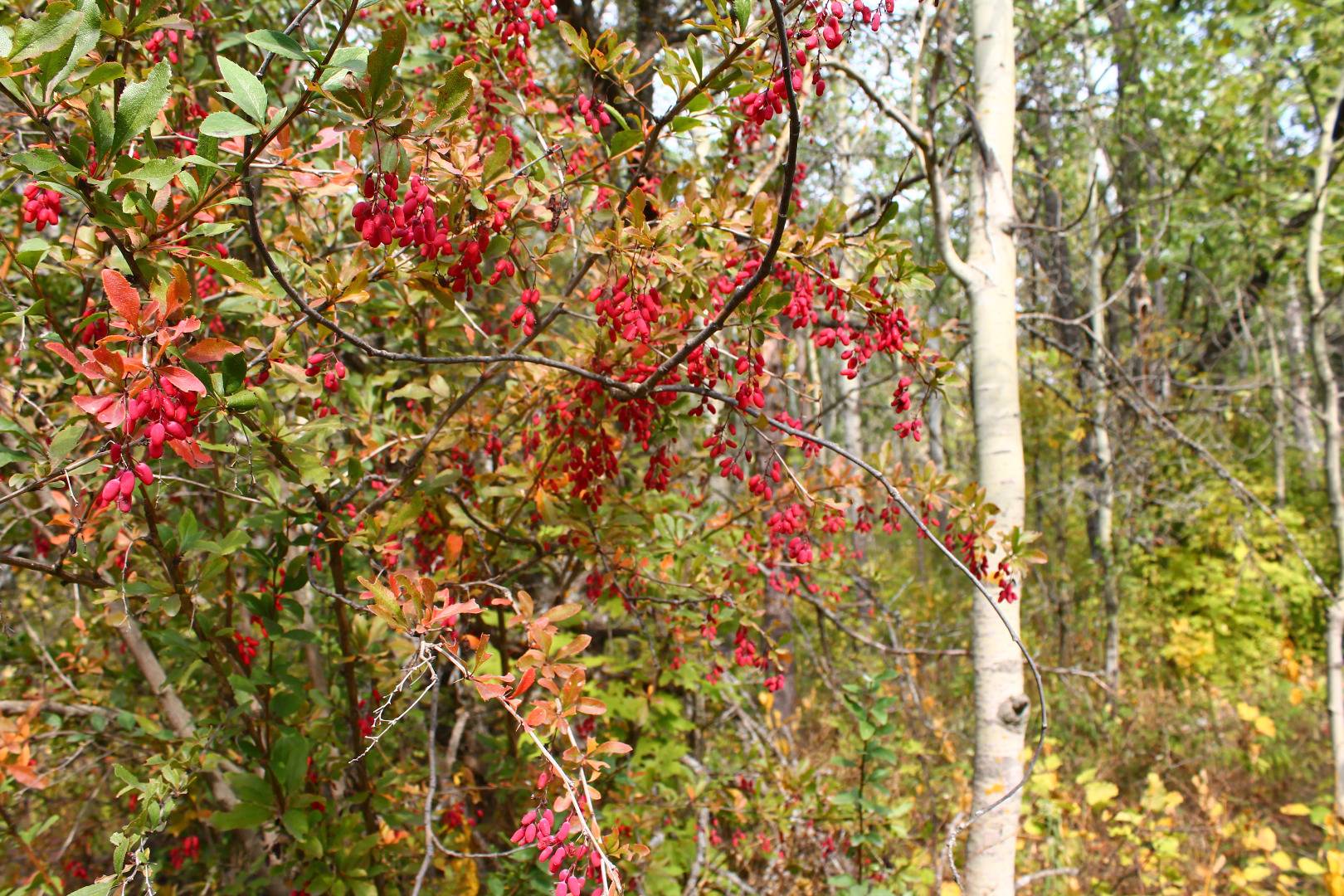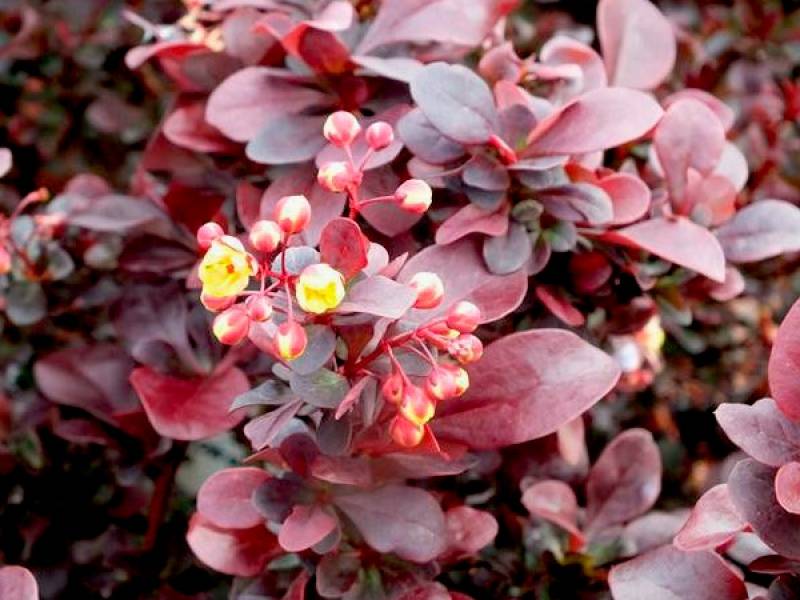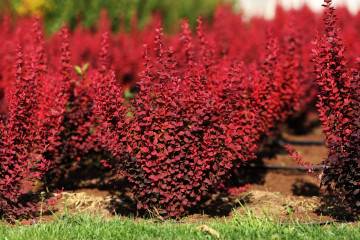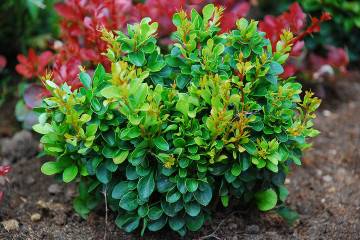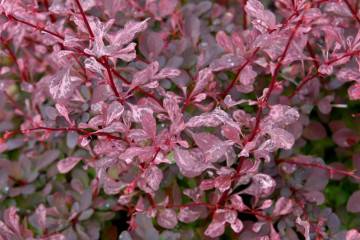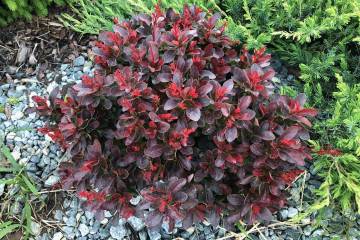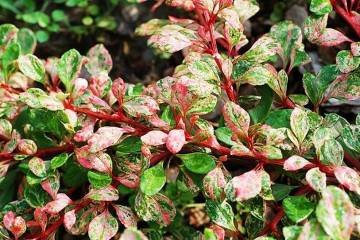Barberry - popular varieties, description
Content:
The Barberry family includes 175 species and more than 480 plant varieties. They have found their application both in the food industry and among landscape designers. Representatives of the family are very beautiful, especially during flowering and fruiting.
Description of barberry
All members of the Barberry family are called barberry. General botanical description:
- life form - a large shrub or tree (less often);
- shoots are long, slightly prickly;
- lush flowers, densely located on a branch, with a delicate, pleasant smell;
- the fruit is a round or slightly elongated berry, its size is from 7 to 13 mm.
In the wild, it is distributed in Central Asia, Transcaucasia, Europe (with the exception of its northern part).
Which varieties are more common
All varieties of barberry are divided into several categories:
- edible species;
- evergreen barberry;
- dwarf species;
- decorative deciduous varieties;
- fast growing species;
- species suitable for a certain territory (those that are better in the south, cultivation of which is possible in Siberia, Central Russia, etc.).
Each gardener, first of all, is determined with the group he needs, and studies the varieties that are included in it. They can overlap, or they can be radically different from each other. In each of the groups there are varieties that are most popular.
Orange Sunrise
Barberry Orange Sunrise is one of the many varieties of the Thunberg decorative group. Representatives of this group belong to shrubs, the homeland of which is considered to be Japan. They are very often grown in garden plots, they decorate city parks and squares. Orange Sunrise looks impressive thanks to its bright and elegant leaves.
Description of the plant:
- the maximum height of the bush is 1.5 m;
- branches of red color, erect and abundantly covered with leaves;
- leaves are round, medium-sized (up to 3 cm), bright orange or scarlet. In adult shrubs, a yellow edging is located along the edge of the leaves;
- flowering occurs in spring, in early May, lasts about 3 weeks;
- small red flowers with yellow stamens;
- small elongated fruits appear in the fall. They are unsuitable for human consumption due to their unpleasant bitter taste.
Concorde
Barberry Concorde is another Thunbergii. Botanical description of the Concorde barberry:
- life form - dwarf deciduous shrub;
- maximum height 60 cm;
- the crown is spherical, in diameter it can be equal to the height, and sometimes even exceed it;
- the color of medium-sized leaves changes during the season: at first it is burgundy-purple, gradually becomes lighter, turns red. The leaves are characterized by a glossy sheen, making them look even more impressive;
- stems are erect and prickly;
- flowers are small, yellow, look spectacular against the background of bright leaves. The flowering period is from early May to mid-June;
- the plant bears fruit in early - mid-autumn, red fruits are about 1 cm long.
Red Lady
Barberry Darts Red Lady is another variety belonging to the Thunberg species. This is an ornamental deciduous shrub, which is widespread due to the unusual property of its leaves, they change their color throughout the season. Botanical description of the variety:
- the height and width of the crown of the shrub can reach 1.5 m;
- the growth is quite good, up to 10 cm per year;
- the trunk and shoots are covered with small thorns;
- rounded maroon leaves at the beginning of the season, bright red by mid-autumn;
- flowers are small yellow, they are collected in small inflorescences. Flowering occurs at the end of May and lasts 2-3 weeks;
- berries appear in mid-autumn and remain on the shoots until spring.
Orange Dream
Barberry Orange Dream is a dwarf shrub that is often used in landscape design due to its attractiveness and unpretentiousness. This variety of barberry looks like this:
- height up to 70 cm, diameter exceeds height and reaches 1 m;
- leaves are small lanceolate bright orange, by autumn they become rich burgundy;
- flowering occurs in spring, in May, the flowers are yellow, small and collected in inflorescences.
Golden Touch
Barberry Golden Torch (Golden Touch) is one of the most beautiful and unusual varieties of Thunberg. The leaves of the plant at the beginning and middle of the growing season have a bright yellow color, and by autumn they become fiery red. The flowering period is May.
Like other varieties, it blooms with small yellow flowers, which are collected in umbrella inflorescences. The maximum height of the shrub is 1.5 m. The drooping shoots are red. In autumn, berries are formed that last until the beginning of winter.
Other varieties
In addition to the ones presented above, there are other varieties of barberry that are also loved by gardeners. Some belong to the Thunberg group, others do not. But they are all worthy of recognition:
- barberry Lyutin Rouge is a compact deciduous shrub with a lot of shoots. The height reaches only half a meter, and the width can exceed it 2 times. During the growing season, small leaves are light green, turn red by autumn, then fall off. The fruits are inedible. The variety is absolutely unpretentious, requires only superficial care. One of the easiest ornamental types of barberry to grow, it grows well in the open field, but it can decorate an open veranda or balcony due to its low growth;
- barberry Pau Wow looks less bright than other Thunberg varieties. But sometimes flower growers do not want unusual, bright spots, and to complete the composition they need something compact, neat in the usual color. In this case, it is the Powwow variety that must be planted on the site. It is a small, up to 120 cm in height, shrub, the width of which can be up to 80 cm. The leaves are small, no larger than 2 cm, light green, in autumn they become the usual yellow or orange color. Also, beautiful bright red berries appear on the bush, thanks to which it stands out against the general background. Suitable for growing in Central Russia;
- common barberry is a fairly common species. Its height can reach 3 m, the stems are covered with sharp thorns, leaves 4-5 cm long are formed on the branches. Well suited as a hedge due to the huge number of sharp thorns. The advantage of this variety is that its ripe berries are edible and quite palatable.However, you should not take risks with green berries, they can cause poisoning.
There are a lot of varieties of barberry, both decorative and not. Each gardener plants on his site the one that suits him. It depends, first of all, on the purpose of growing. After all, the fruits of barberry can be used both in the food industry and for medicinal purposes. And it is very important that there are no ugly varieties. Any of them will become a garden decoration.

